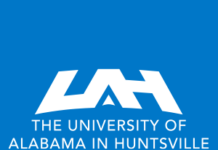 A new report from the global consulting firm McKinsey & Company finds that historically marginalized racial and ethnic populations — Black, Hispanic and Latino, and Native American and Pacific Islander — are still underrepresented in higher education among undergraduates and faculty and in leadership. Students from these groups also have worse academic outcomes as measured by graduation rates. Only 8 percent of institutions have at least equitable student representation while also helping students from underrepresented populations graduate at the same rate as the general U.S. undergraduate population.
A new report from the global consulting firm McKinsey & Company finds that historically marginalized racial and ethnic populations — Black, Hispanic and Latino, and Native American and Pacific Islander — are still underrepresented in higher education among undergraduates and faculty and in leadership. Students from these groups also have worse academic outcomes as measured by graduation rates. Only 8 percent of institutions have at least equitable student representation while also helping students from underrepresented populations graduate at the same rate as the general U.S. undergraduate population.
The company’s analysis finds that with current rates of change it would take about 70 years for all not-for-profit institutions to reflect underrepresented students fully in their incoming student population. But this calculation of the rate of progress is primarily driven by recent increases in Hispanic and Latino student attendance. For Black and Native American students and for faculty from all underrepresented populations, there was effectively no progress from 2013 to 2020, according to the report.
For faculty, the study found that 88 percent of not-for-profit colleges and universities have full-time faculties that are less diverse than the U.S. population as of 2020. That number rises to 99 percent for institutions defined as R1, the nation’s leading research institutions. The study found that progress in diversifying full-time faculty ranks over the past decade has been negligible. The startling conclusion: It would take more than 1,000 years at the current pace to reach parity for all not-for-profit institutions.
The full report, Racial and Ethnic Equity in U.S. Higher Education, may be downloaded here.












The research is clear; we do not value diversity…